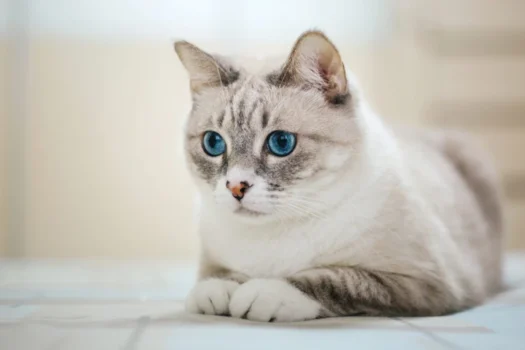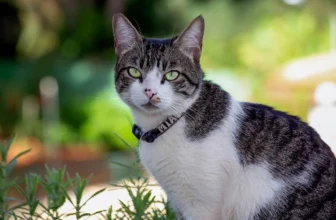As a proud owner of an American Wirehair, you may be considering breeding your cat. However, choosing the right breeding partner is a crucial decision that should not be taken lightly. With so many factors to consider, it can be overwhelming to know where to start. But don’t worry, we are here to guide you through the process. From selecting the right physical and temperament traits to understanding genetics and health testing, we’ve got you covered. So, let’s dive in and explore the important factors to consider when choosing a compatible breeding partner for your beloved American Wirehair.
Traits to Look for in a Breeding Partner
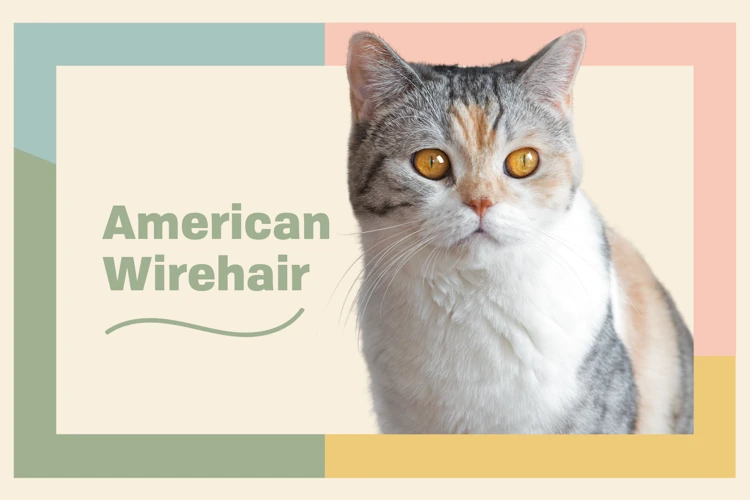
When it comes to choosing a breeding partner for your American Wirehair, there are several factors to consider in order to ensure healthy and high-quality offspring. One of the most important factors is selecting a partner with the right traits. Physical and temperament traits are both crucial to consider, as they can affect the health, appearance, and personality of the kittens. Let’s explore these traits in more detail and learn how to choose the right breeding partner for your American Wirehair. (source: wirehair-breeding-traits)
Physical Traits
Choosing a compatible breeding partner for your American Wirehair requires thorough consideration of various physical traits, which will help to ensure that the offspring meet the breed standards and have good health. Here are some crucial physical traits to consider when selecting a breeding partner for your American Wirehair:
- Coat color and patterns: American Wirehairs come in a wide variety of coat colors and patterns. As a breeder, you may want to select a partner that complements your cat’s coat color and pattern to produce attractive offspring.
- Structure and conformation: American Wirehairs have a unique and distinct body structure, with a muscular and sturdy build. When selecting a breeding partner, you should look for a partner that has a similar body structure and conformation to produce healthy kittens that are true to the breed’s standards.
- Head shape: The American Wirehair breed is characterized by a round and broad head with a short nose. When choosing a breeding partner, look for a cat that has similar head shape and facial features to maintain the breed’s distinctive appearance.
- Eye color and shape: The American Wirehair breed typically has large, round eyes that come in various colors, including gold, green, and copper. When selecting a breeding partner, look for a cat that has the same eye color and shape as your cat to produce consistent and standard offspring in terms of eye appearance.
- Ear size and shape: American Wirehairs have medium-sized ears that are broad at the base and rounded at the tips. It is crucial to choose a breeding partner that has similar ear size and shape to maintain the breed’s distinctive appearance.
When selecting a breeding partner for your American Wirehair, it is important to maintain the breed’s standards by considering the physical traits listed above. Remember that physical traits alone do not guarantee healthy or genetically sound offspring. Always conduct proper health testing and genetic testing before breeding, as discussed in our article on the importance of genetic testing in breeding American Wirehairs.
Temperament Traits
When selecting a compatible breeding partner for your American Wirehair, temperament traits are just as important as physical traits. Your cat’s personality is a crucial factor to consider, as it can significantly affect the traits and personalities of their kittens. Here are some temperament traits to keep in mind:
- Sociability: It’s essential to choose a breeding partner with a similar level of sociability to your cat. If your cat is friendly and outgoing, choose a partner with a similar temperament to ensure that their kittens will have similar personality traits. If your cat is shy or standoffish, find a partner with a similar temperament to avoid producing overly outgoing kittens that may not do well in quieter environments.
- Activity Level: The activity level of your cat’s breeding partner is also essential. If your cat is very active and energetic, choose a partner that matches their energy levels. On the other hand, if your cat is more relaxed and calm, choose a partner with a similar temperament to ensure that their kittens will also be calm and relaxed.
- Trainability: If you plan to train your kittens for shows or other activities, you’ll want to choose a breeding partner with good trainability. Look for a cat with a willingness to learn and an eagerness to please their owner.
- Independence: Some cats are more independent than others. If your cat is very independent, you’ll want to choose a partner with a similar temperament. On the other hand, if your cat is more clingy and requires a lot of attention, a partner with a similar temperament will ensure that their kittens will be the same.
- Aggressiveness: Aggression in cats is never desirable. When choosing a breeding partner, look for a cat that is docile and not aggressive. This will ensure that their kittens will also be docile and not aggressive.
Remember that temperament traits are just as important as physical traits when it comes to breeding American Wirehairs. By keeping these traits in mind, you can find a compatible partner that will produce healthy and happy kittens. For more information on American Wirehair breeding, check out our article on American Wirehair breeding and temperament.
Health Testing
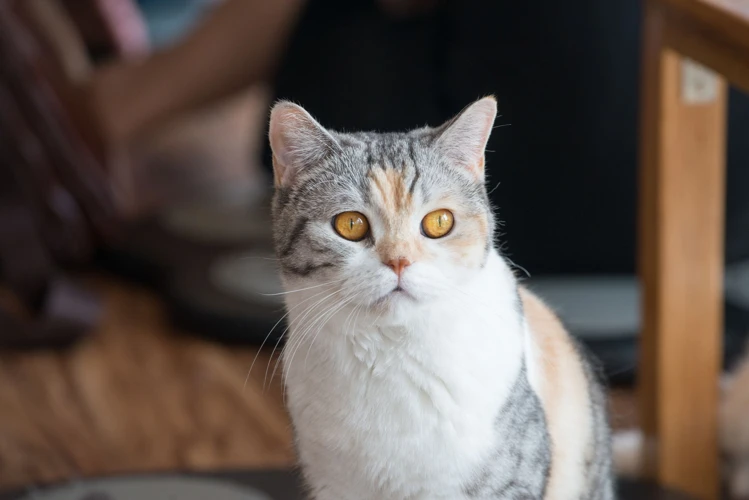
When it comes to breeding American Wirehairs, ensuring the health of the offspring is of utmost importance. This is where health testing comes into play. It involves different medical tests and evaluations that determine the presence of genetic and/or hereditary health issues that may be passed on to future generations. While health testing may be costly and time-consuming, it can greatly reduce the risk of producing unhealthy or genetically compromised kittens. Let’s take a closer look at why it’s essential for breeders to prioritize this aspect of selecting a breeding partner.
Common Health Issues in American Wirehairs
One of the first things to consider when selecting a breeding partner for your American Wirehair is the breed’s common health issues. Like any other breed, the American Wirehair is prone to certain health problems that can be passed down to their offspring. Awareness of these issues can help you choose a healthy breeding partner to improve the health of their kittens.
One common health issue in American Wirehairs is hypertrophic cardiomyopathy, or HCM, which is a heart disease that can lead to heart failure in affected cats. Another disease to look out for is hip dysplasia, which can lead to pain, stiffness, and difficulty moving around. Additionally, certain types of cancer, such as oral squamous cell carcinoma and lymphoma, are more common in American Wirehairs than in other breeds.
It is important to note that not all American Wirehairs will have these health issues, but it is recommended to test potential breeding partners for these diseases to minimize the risk of passing them onto their kittens. DNA testing for HCM and hip dysplasia can provide insight into whether a cat is a carrier of these diseases, so it’s important to request health testing records from the cat’s breeder before selecting a breeding partner.
Regular veterinary check-ups and screenings are also crucial in detecting and preventing potential health issues in both the breeding partners and their offspring. Choosing healthy breeding partners should be a top priority to ensure healthy, happy kittens and prevent the spread of genetic diseases.
Internal Link: Inbreeding and Outbreeding can have an impact on the prevalence of certain health issues in cats, and should also be considered when selecting a breeding partner.
Health Testing for Breeding Partners
As a responsible breeder, one of the most important factors to consider when choosing a compatible breeding partner for your American Wirehair is their health. Health testing is necessary to ensure that your breeding pair will not pass on any genetic disorders or medical conditions to their offspring. Here are some of the most common health tests to consider before breeding your American Wirehair:
| Health Test | Description | Recommended Frequency |
|---|---|---|
| Hip Dysplasia Evaluation | An evaluation of the hip joint to determine if there is any abnormal development or degeneration. | Once before breeding |
| Patellar Luxation Evaluation | An evaluation of the kneecap to check for any abnormal movement or dislocation. | Once before breeding |
| Polycystic Kidney Disease (PKD) Genetic Test | A genetic test to check for the presence of the PKD gene, which can cause cysts to develop in the kidneys. | Once before breeding |
| Hypertrophic Cardiomyopathy (HCM) Screening | An ultrasound of the heart to check for abnormal thickening of the heart muscle. | Annually |
It is important to note that these health tests are not a guarantee that your American Wirehair kittens will be free of any medical conditions, but they do help to reduce the risk. Additionally, it is important to choose breeding partners that are up to date on all vaccinations and have been tested for communicable diseases such as Feline Leukemia Virus (FeLV) and Feline Immunodeficiency Virus (FIV).
By taking the time to conduct comprehensive health testing on your breeding partners, you can be confident that you are producing healthy, genetically sound kittens. It is also important to keep in mind that breeding should not solely be based on physical traits, as choosing partners with compatible temperaments is equally important. For more information on coat color patterns in American Wirehairs, check out our article on American Wirehair coat color patterns.
Genetics
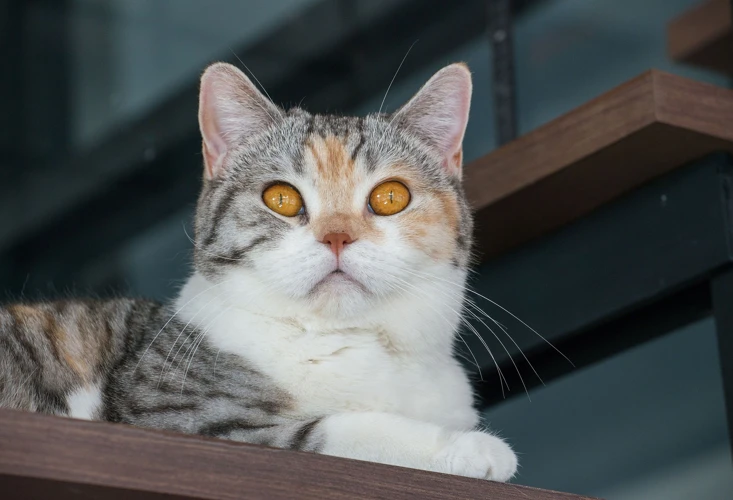
The study of genetics plays a vital role in identifying desirable traits in purebred cats, and it’s especially important for American Wirehairs. Understanding basic genetics is crucial before diving into the complexities of breeding any feline species. Genetic makeup can influence everything from a cat’s color, to its temperament, to its susceptibility to diseases. It’s essential to start with a strong knowledge of genetics in order to make informed decisions about breeding American Wirehairs and improve their breed over time.
For those looking to improve their American Wirehairs’ breeding through genetics, it’s important to learn the concepts of genetic testing and breeding strategies. Additionally, it’s vital to understand the differences between outcrossing and linebreeding, as well as how to interpret pedigrees. Let’s delve deeper into these complex concepts. If you’re interested in crossbreeding American Wirehairs, check out the benefits of crossbreeding American Wirehair cats in this article. On the other hand, if you want to learn about common mistakes in American Wirehair breeding, take a look at this article.
Understanding Basic Genetics in Cats
When it comes to breeding American Wirehairs, it’s important to have a basic understanding of genetics to ensure that you are producing healthy and desirable offspring. Here are some key genetics concepts to consider:
| Term | Explanation |
|---|---|
| Genes | Genes are sections of DNA that determine specific traits in an individual, such as coat color or eye shape. These traits are inherited from the cat’s parents. |
| Dominant Genes | Dominant genes are those that will always be expressed if present. For example, a cat with one dominant gene for black fur will always have black fur, even if they have one gene for another color. |
| Recessive Genes | Recessive genes are only expressed if an individual has two copies of the gene. If an individual has only one copy of a recessive gene, it will not be expressed, but can be passed down to offspring. |
| Alleles | Alleles are different versions of a gene. For example, there are multiple alleles for coat color in cats, such as black, white, and orange. |
| Homozygous | If an individual has two copies of the same allele, they are said to be homozygous for that trait. For example, a cat with two copies of the black fur allele is homozygous for black fur. |
| Heterozygous | If an individual has two different alleles for a trait, they are said to be heterozygous. For example, a cat with one black fur allele and one orange fur allele is heterozygous for fur color. |
Understanding these basic genetics concepts is the first step in breeding American Wirehairs responsibly. By knowing which traits are dominant or recessive, breeders can make informed decisions about which cats to breed in order to produce desired traits in their offspring. It is important to consult with a veterinarian or geneticist to ensure that you are breeding in a responsible and ethical manner.
Genetic Testing for Breeding Partners
When it comes to breeding American Wirehairs, genetic testing is a crucial step. It helps to determine if there are any underlying hereditary health issues that could be passed on to the offspring. Here are some genetic tests recommended for breeding partners:
| Genetic Test | Description |
|---|---|
| PRA (progressive retinal atrophy) | This test screens for an inherited eye disease that can lead to blindness in American Wirehairs. |
| HCM (hypertrophic cardiomyopathy) | HCM is a heart disease that can also be inherited. This test helps to identify cats that are carriers of the gene that causes HCM. |
| FIV (feline immunodeficiency virus) | FIV is a viral disease that attacks a cat’s immune system. Testing breeding partners for FIV is crucial to avoid spreading the disease to offspring. |
| FeLV (feline leukemia virus) | FeLV is another viral disease that can impact a cat’s immune system, leaving them susceptible to other infections and diseases. Testing for FeLV is essential to avoid transmission to offspring. |
It’s important to note that even if a breeding partner tests positive for a hereditary disease, it doesn’t necessarily mean they should be eliminated as a potential mate. Working with a knowledgeable veterinarian and genetic counselor can help to determine whether or not a match between two cats with a known genetic issue is appropriate.
By undergoing genetic testing, breeders can take proactive steps towards producing healthy litters while improving the overall quality of the breed.
Breeding Strategies to Consider
When it comes to breeding your American Wirehair, there are several breeding strategies to consider. Each strategy has its own set of advantages and disadvantages, so it’s important to weigh them carefully before making a decision. Let’s take a closer look at some of the options available to you:
| Breeding Strategy | Description |
|---|---|
| Inbreeding | Also known as linebreeding, this involves breeding closely related cats within the same family. The goal here is to preserve desirable traits and produce consistent litters. However, inbreeding can also increase the risk of genetic defects and health problems. |
| Outcrossing | This strategy involves breeding two cats from different families or breeds. The goal here is to introduce new genetic diversity into your breeding program, which can improve the overall health and vitality of your kittens. However, the downside is that outcrossing can also introduce undesirable traits and characteristics. |
| Backcrossing | Also known as “crossing back,” this strategy involves breeding a cat with one of its parents or a close relative. The goal here is to reinforce desirable traits while minimizing the risk of undesirable traits. However, backcrossing can also increase the risk of genetic defects and health problems. |
| Hybridization | This strategy involves breeding two cats from different species to create a hybrid litter. The goal here is to produce a unique and desirable kitten with a combination of traits from both parent species. However, hybridization can also be risky and unpredictable, and some hybrids may have health problems or behavioral issues. |
Remember, no matter which strategy you choose, it’s important to prioritize the health and well-being of your cats and their offspring. Consider genetic testing and breeding with cats who have a clean bill of health. Consulting with a veterinarian or an experienced breeder can also help you make an informed decision about which breeding strategy is best for your American Wirehair.
Outcrossing vs. Linebreeding
Breeding strategies are important considerations before deciding on the best compatible breeding partner for your American Wirehair. When selecting a breeding partner, you’ll need to decide whether to outcross or linebreed.
Outcrossing involves bringing a cat into your breeding program that has no close genetic relation to your American Wirehair. Outcrossing can introduce new traits and characteristics into your breeding program which can help improve the breed’s genetic diversity. However, it can also be risky, as the new cat’s genetic makeup may not be compatible with that of your American Wirehair. Outcrossing is typically done when there are no suitable cats within your breeding program or to avoid undesirable traits that may have appeared in your line.
Linebreeding involves breeding cats within the same family line. This strategy is popular among breeders because it allows them to keep desirable traits within their breeding program and establish a recognizable breed type. Linebreeding can also help breeders spot genetic anomalies early on and eliminate undesirable traits. However, it can also increase the risk of genetic defects and diseases, which is why it is important to be aware of your American Wirehair’s family history and to do thorough health testing on potential breeding partners.
Here is a table that summarizes the main differences between outcrossing and linebreeding:
| Outcrossing | Linebreeding | |
|---|---|---|
| Definition | Introducing a cat into your breeding program that is not closely related to your American Wirehair. | Breeding cats who share a common ancestor or family line. |
| Purpose | To improve genetic diversity and introduce new traits into your breeding program. | To maintain desirable traits and establish a recognizable breed type. |
| Risks | Increased risk of incompatible genetics, unknown health risks, and destabilizing your breeding program. | Increased risk of genetic defects and diseases, inbreeding depression, and limiting genetic variability. |
| Benefits | Introducing new traits, improving genetic diversity, and avoiding undesirable traits. | Maintaining desirable traits, establishing a recognizable breed type, and spotting genetic anomalies early on. |
| Examples | Breeding your American Wirehair with a Persian or Siamese cat. | Breeding siblings, parents with offspring, or cats that share a common ancestor. |
When choosing a compatible breeding partner for your American Wirehair, it’s important to consider both outcrossing and linebreeding strategies and to consult with a reputable veterinarian or breeder to determine the best course of action for your breeding program.
Understanding Pedigrees
When considering a compatible breeding partner for your American Wirehair, it’s important to understand their pedigree. A pedigree is a record of a cat’s ancestors, going back several generations. This information is helpful in understanding the potential genetic makeup of a cat and can give insight into any health or temperament issues that may be present in their lineage.
What to look for in a pedigree:
When examining a pedigree, there are several things to keep in mind. The first is the number of champions in the cat’s lineage. A champion is a cat who has won several titles in cat shows. The more champions in a cat’s pedigree, the more likely they are to have desirable physical traits.
Another thing to look for is the presence of any health issues in the cat’s family tree. If any of the cat’s ancestors have a history of a particular health issue, there is a chance that the cat may inherit that issue as well. For example, if there are several instances of hip dysplasia in a cat’s pedigree, that cat may be at higher risk for developing the condition.
How to read a pedigree:
Pedigrees are typically presented in a table format, with the cat being examined at the top and their ancestors listed below. Vertical lines show the parents of the cat, with their names and registration numbers listed. Horizontal lines connect siblings, and diagonal lines indicate cats that are related but not direct ancestors.
Each cat in the pedigree may also have a code that indicates certain traits or achievements. For example, the letters “GC” before a cat’s name means they are a grand champion, while the letters “DM” mean they are a distinguished meritorious cat.
What to do with pedigree information:
Understanding a cat’s pedigree can help you make informed decisions when choosing a compatible breeding partner. If you are looking to improve a particular trait or eliminate a health issue in your American Wirehair line, studying pedigrees can help you identify cats with the desired traits or a low risk of genetic issues.
It’s important to note, however, that a pedigree is just one piece of the puzzle when choosing a breeding partner. Other factors, such as health testing and temperament, should also be taken into consideration. By using a combination of these factors, you can make educated decisions that will improve the overall health and beauty of your American Wirehair line.
Other Considerations
As you prepare to breed your American Wirehair, it’s important to take into account a range of factors that go beyond physical and genetic traits alone. These “other considerations” can make a big difference in the success and viability of the breeding process. Before you choose the perfect breeding partner for your cat, it’s worth exploring a few other crucial details that may impact the outcome of your plans. Here are some of the key factors to consider as you move forward with your breeding process.
Timing of Mating
Timing of Mating is an important consideration while breeding American Wirehairs. The ideal time for mating is when the female is in heat, which is usually every 21 days. However, it is important to not rush into mating as it is crucial that both partners are healthy and ready for reproduction. It is recommended to wait until both the male and female are at least 1 year old before mating.
Another thing to consider is the time of year. American Wirehairs are seasonal breeders and tend to be more receptive to mating during the fall and winter months. If you are planning to breed your American Wirehair, it is important to plan the timing of the mating accordingly.
It is also important to consider the timing of the birth of the kittens. A female American Wirehair can have several heats during one breeding season but it is recommended to give her body some time to rest between litters. Experts recommend waiting at least 6 months before breeding again.
It is crucial to provide proper care and nutrition to the pregnant female American Wirehair. Make sure that the female is well-fed and has access to clean water at all times. It is recommended to give them high-quality kitten food during pregnancy and nursing to provide extra protein and fat.
Here is a table summarizing the timing considerations for breeding American Wirehairs:
| Consideration | Recommendation |
|---|---|
| Age of Breeding Partners | At least 1 year old |
| Time of Year | Fall and winter months |
| Time Between Litters | At least 6 months |
| Pregnant Female Nutrition | High-quality kitten food |
Following these timing considerations will help ensure healthy offspring and a successful breeding program for your American Wirehairs.
Location and Travel
When choosing a compatible breeding partner for your American Wirehair, location and travel are important factors to consider. If you have found a suitable partner that lives far away, you may need to travel to them or have them travel to you. Here are some things to consider:
| Factor to Consider | Explanation |
|---|---|
| Distance | You’ll want to consider how far you’ll need to travel or how far the other breeder will need to travel to you. Long distances can be stressful for both you and the cats. |
| Transport Method | Consider the mode of transport available. Will you be driving, flying or using a pet transport service? Be sure to factor in travel time, cost and any additional transport requirements such as size restrictions, pet carriers, vaccinations, and health certificates. |
| Familiarity with the Area | If you’re traveling to an unfamiliar location, it’s always best to research and plan ahead. Look for hotels or accommodations that are pet-friendly and nearby. It’s also a good idea to familiarize yourself with the local veterinary hospitals should an emergency arise. |
| Safety | Cats are sensitive and nervous creatures. Ensure that you’re considering their safety and well-being throughout the journey. Always use appropriate carriers for transportation and assure that they are secured and comfortable. |
| Timing | Consider the time of year and weather conditions. Extreme temperatures or unfavorable weather conditions can make travel unsafe or uncomfortable for the cats. Make sure to plan your trip accordingly, and prepare for any necessary adjustments to your schedule based on weather and other unforeseen circumstances. |
By considering all of these factors, you can ensure that the location and travel arrangements for your breeding partner are suitable for both you and the cats. Taking the extra time to plan and prepare can help reduce stress and ensure a successful breeding experience.
Agreement with the Breeder
One of the most critical considerations when selecting a breeding partner for your American Wirehair is ensuring you have a solid agreement with the breeder. Before entering into an agreement, it’s essential to define what each party’s responsibilities are. Here are some items to consider when developing an agreement with your breeder:
- Terms and Conditions: Be sure to establish the terms and conditions of the agreement, including the frequency of communication, expected outcomes, and any guarantees offered from the breeder.
- Medical History: Request all copies of medical records and test results on the potential breeding partner before signing an agreement. This information is crucial in evaluating the cat’s health and any potential risks to offspring.
- Lineage: Verify the cat’s lineage to ensure it aligns with your breeding objectives. The agreement should outline how the lineage will be proven and what happens if the lineage is different from what was stated.
- Cost: Clearly, state the cost of breeding services and what is included in that cost. Some breeders may require additional fees for exceptional services such as artificial insemination or testing.
- Ownership and Registration: Specify who owns the offspring and who is responsible for registering them. It’s essential to formalize these agreements to avoid confusion or disputes in the future.
- Delivery and Shipping: If shipping is involved, the agreement should specify who is responsible for shipping expenses, what carrier will be used, and the level of insurance. Additionally, the agreement should make it clear who will be responsible for the cat’s care and wellbeing during transportation.
Reaching an agreement with the breeder is paramount when selecting a breeding partner. The agreement should outline the terms, conditions, cost, and ownership. It should also specify who is responsible for medical records, lineage, transportation, and registration. Having a clear agreement will help establish a productive and successful breeding partnership.
Legal Requirements
When it comes to breeding any animal, it is important to be aware of the legal requirements for doing so. Before starting any breeding program, it is crucial to research and comply with all local and national laws and regulations to avoid any legal issues in the future.
Here is a table outlining some common legal requirements for breeding American Wirehairs:
| Requirement | Description |
|---|---|
| Licensing | In many states or countries, breeders are required to have a license to breed animals. |
| Registration | The American Wirehair breed, like all purebred cats, has a breed registry where kittens can be registered after they reach a certain age. Breeders must ensure that their cats and kittens are registered appropriately. |
| Vaccinations | It is essential to vaccinate cats against common feline diseases to ensure overall health. Before breeding, all cats involved should be adequately vaccinated. |
| Animal Welfare Regulations | In addition to requirements for breeding cats, there are also regulations in place that ensure the welfare of the animals involved in breeding and selling. These regulations cover areas like proper housing, nutrition, and medical care. |
| Sales Contracts | Many breeders require buyers to sign contracts to ensure that their kittens are going to good homes. These contracts may include clauses about spaying/neutering, breeding restrictions, and returning the cat to the breeder if the new owner cannot care for it. |
Remember that legal requirements can vary by location, so it is essential to do thorough research and speak with professionals in your area to ensure that you are in compliance with all laws and regulations. By doing so, you can protect the health and well-being of your cats and avoid any potential legal issues down the road.
Conclusion
In conclusion, choosing a compatible breeding partner for your American Wirehair requires careful consideration of various factors. Physical and temperament traits play a significant role in determining the health and behavior of the offspring. It is important to conduct health testing to ensure that both the male and female cats are free from common health issues that can be passed down to their kittens.
Understanding basic genetics and genetic testing can also help in making informed decisions when choosing a breeding partner. Breeding strategies such as outcrossing and linebreeding should be considered, and pedigrees can provide valuable information.
Other considerations such as timing of mating, location, and legal requirements should not be overlooked. It is important to have clear agreements with the breeder to avoid any misunderstandings.
Overall, choosing the right breeding partner for your American Wirehair can be a challenging but rewarding process. By taking into account the various factors discussed in this article, you can increase the chances of producing healthy and well-behaved kittens that will bring joy to their new owners. Remember to always put the welfare of the cats and their offspring first and foremost.
Frequently Asked Questions
What are the most desirable physical traits in an American Wirehair breeding partner?
The most desirable physical traits in an American Wirehair breeding partner include proper proportion, strong bone structure, dense and wiry coat, and a round face with heavy brows and strong chin.
What temperament traits should I look for in an American Wirehair breeding partner?
Look for a breeding partner with a friendly and outgoing personality, a calm temperament, patience, and affection towards humans and other animals.
What are the common health issues in American Wirehairs?
Some of the common health issues in American Wirehair cats include hypertrophic cardiomyopathy, polycystic kidney disease, hip dysplasia, and progressive retinal atrophy.
Why is health testing important for breeding partners?
Health testing ensures that the breeding partners do not pass on any inherited diseases to their offspring. It is crucial to maintain the health and well-being of the breed.
What is linebreeding?
Linebreeding is breeding two cats who share common ancestors within four to five generations. It is done to maintain desirable traits and characteristics of a breed.
What is outcrossing?
Outcrossing is breeding a cat with another cat from a different breed or a different bloodline. It is done to widen the gene pool, improving overall health and vigor.
What is genetics testing?
Genetic testing is a DNA test that identifies the presence of specific inherited diseases and traits. It helps breeders create healthy, genetically diverse, and high-quality litters.
What is a pedigree?
A pedigree is a chart that shows the lineage of a cat. It displays the names of the ancestors, their breed, and any titles or accomplishments they may have.
What is the best time for mating?
The best time for mating an American Wirehair cat is when the female is in heat, which happens about every two to three weeks during the breeding season between January and September.
What are the legal requirements for cat breeding?
Legal requirements for cat breeding vary by location, but some common regulations include obtaining a breeding license, meeting animal welfare standards, and keeping proper records of litters and health tests.

